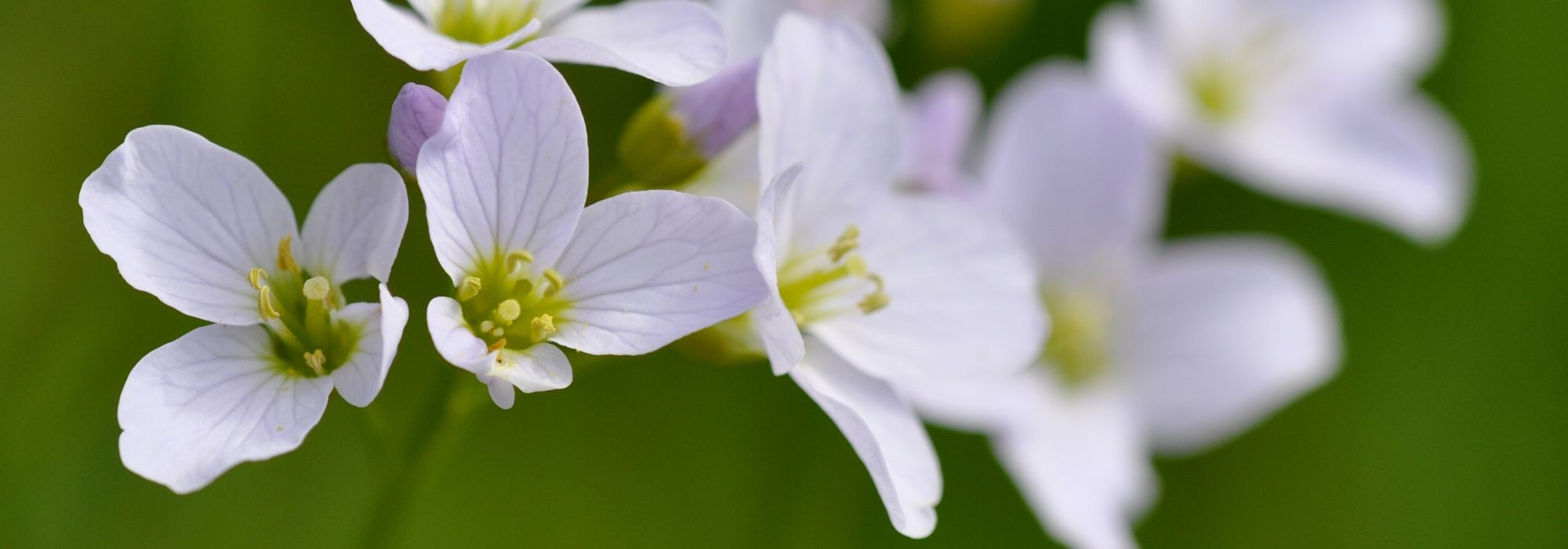
Cardamine: planting, growing
Contents
Cardamine in a nutshell
- Cardamine is a small perennial plant of marshes essential in heavy, cool soils
- It is one of the first plants to flower in spring, producing clusters of white to lilac flowers
- Edible, its leaves add a peppery flavour to dishes
- Very hardy, it spreads slowly without becoming invasive
- It thrives in damp locations, on the banks of a pond or in any cool, moist ground
The expert's note
Cardamine is a small perennial plant often referred to as “Cresson des près” or “cressonnette” due to the resemblance of its leaves to those of watercress. Like watercress, it has a peppery and aromatic flavour that enhances roasted poultry, salads, and soups.
Alongside hairy bittercress, Cardamine hirsuta, considered a weed by gardeners, or wood bittercress, Cardamine flexuosa, there are other species worthy of cultivation in our gardens, such as Cardamine pratensis (cresson des près) or Cardamine quinquefolia.
Cardamines are appealing for their simple and graceful spring flowering, with a very wild character.
Well established in cool or moist soil, they slowly form flowering colonies topped with delicate bouquets of pink or white flowers, depending on the variety.
Easy to grow, low maintenance, and very hardy, they are allies of heavy and damp soils.
They naturally find their place by a stream, pond, in light and very cool woodland, or in spring borders.
Forget their reputation as “weeds”; the species we offer deserve a prominent place in the garden! Discover them without delay!
Description and botany
Botanical data
- Latin name Cardamine
- Family Brassicaceae
- Common name Cardamine, Cuckoo flower, Bittercress
- Flowering April to June
- Height 0.15 to 0.45 m
- Exposure Sun, Partial shade
- Soil type rich and light
- Hardiness -15°C
Cardamine is a perennial plant from the Brassicaceae family, it is a close relative of watercress, cabbages, mustard, and rapeseed. It is native to Europe, Western Asia, and North America, where it can be found in wet meadows and along stream banks. Cuckoo flower is a species that grows spontaneously across much of our territory up to 1,700 m in altitude.
Among more than 150 annual or perennial species in the genus, Cardamine pratensis, Cuckoo flower, also known as Cuckoo flower, False cress, or Bittercress, because its basal leaves resemble those of watercress, is the most commonly encountered. Cardamine quinquefolia is also cultivated in our gardens; these two species spread slowly without becoming invasive, unlike hairy bittercress, Cardamine hirsuta, or common cardamine, which is considered a weed and disliked by gardeners. Other species of cardamine are rare to very rare.
From a short underground rootstock, it emerges in spring as a small rosette of branched and bushy leaves, approximately 20 to 40 cm tall and about 30 cm wide. It is a perennial with a strongly to weakly stoloniferous habit. Cuckoo flower tends to form large colonies, which has earned it a bad reputation.
The deciduous foliage unfolds on upright, glabrous stems. The medium green, grey-green to dark green shiny leaves, measuring 10 to 15 cm, are divided into 3 to 7 ovate to rounded leaflets. The foliage consists of 5 leaflets in Cardamine quinquefolia, and 3 parts in Cardamine trifolia. It tapers at the top of the stems.
The basal leaves, divided into narrow lobes, are very different from the cauline leaves, which, due to their roundness, resemble those of watercress. These small crunchy leaves are edible, their sharp yet fine flavour reminiscent of watercress, mustard, and almond.
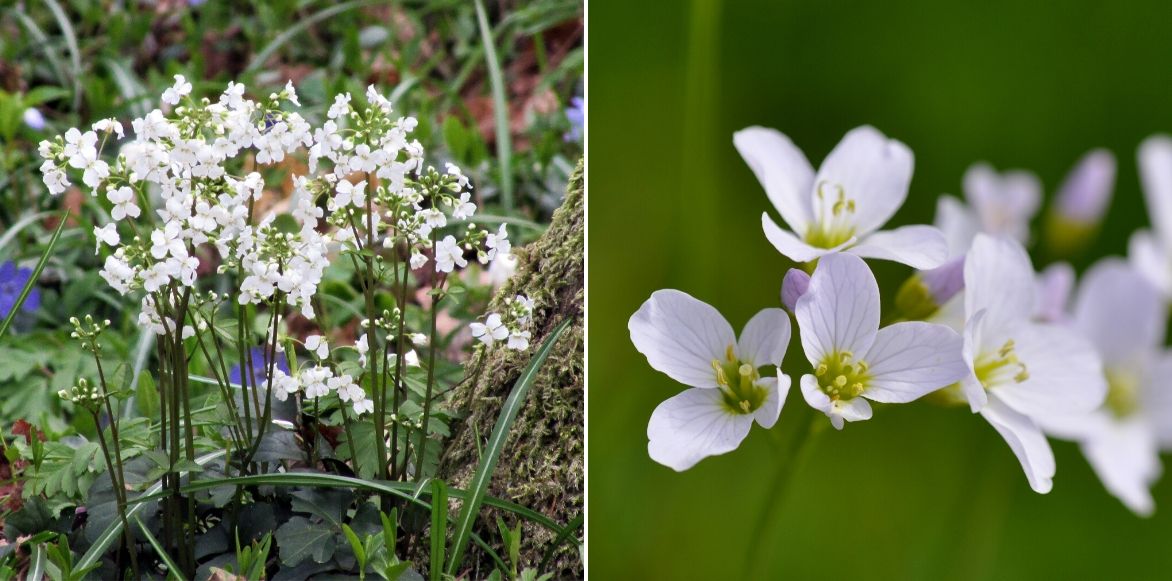
The upright flower spikes bear flowers gathered in small bouquets from March to June. Raised above the foliage by stems 10 to 30 cm long, each tiny flower measures 1 to 3 cm in diameter and consists of four cross-shaped petals, characteristic of the Brassicales, and six stamens.
The flowers, slightly fragrant, are often white, sometimes bright pink, and more rarely pale pink, leaning towards lilac.
The plant then produces dehiscent fruits in the form of slender siliques filled with seeds.
The peppery leaves of cardamine are used to enhance salads, roasted poultry, soups, and sauces like pesto. The plant also possesses medicinal properties, being stomachic, expectorant, and antiscorbutic.
Main species and varieties
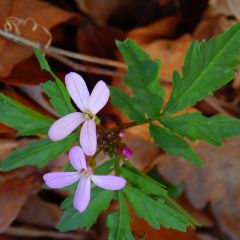
Cardamine quinquefolia
- Flowering time April, May
- Height at maturity 20 cm
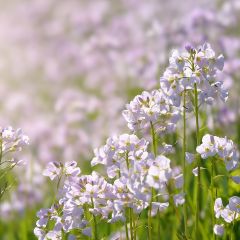
Cardamine pratensis
- Flowering time May to July
- Height at maturity 30 cm
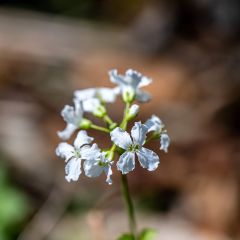
Cardamine trifolia
- Flowering time May to July
- Height at maturity 15 cm
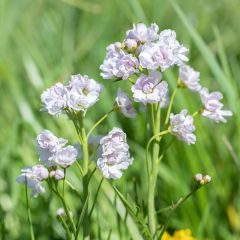
Cardamine pratensis Flore Pleno
- Flowering time May to July
- Height at maturity 30 cm
Discover other Cardamine
View all →Available in 1 sizes
Available in 1 sizes
Available in 1 sizes
Available in 1 sizes
Available in 1 sizes
Available in 1 sizes
Available in 1 sizes
Available in 1 sizes
Available in 1 sizes
Planting Cardamine
Where to plant it?
Native to damp areas, cardamine thrives in cool conditions: its cultivation becomes more challenging in a Mediterranean climate. In fact, during summer, the plant goes completely into dormancy to protect itself from heat and drought. Very cold-resistant (down to -15°C), it fares better in cold than in dry conditions, and it wonderfully tolerates heavy clay and limestone soils, which are more or less waterlogged.
It requires a cool to moist, clayey and humus-bearing soil, remaining consistently cool in summer.
It establishes itself in non-scorching sun or, preferably, in partial shade by the edge of a stream, on the banks of a pond, in damp borders and rockeries, quickly colonising shrub beds or in light, very cool undergrowth. The clumps expand over time but remain very easy to control.
When to plant it?
Planting cardamine is preferably done in spring from March to April, avoiding frost and drought periods, or from August to October to encourage rooting before winter.
How to plant it?
Space the plants about 30 to 50 cm apart and count 7 plants per m² to create a beautiful dense carpet. Its spreading ability can be useful for gradually colonising a neglected cool corner of the garden.
- Dig a hole 3 to 5 times wider than the root ball
- Place the plant in the centre of the hole
- Cover the root ball with a mixture of good potting soil, ordinary garden soil, and a handful of compost
- Firm the soil
- Water generously and then regularly until it establishes
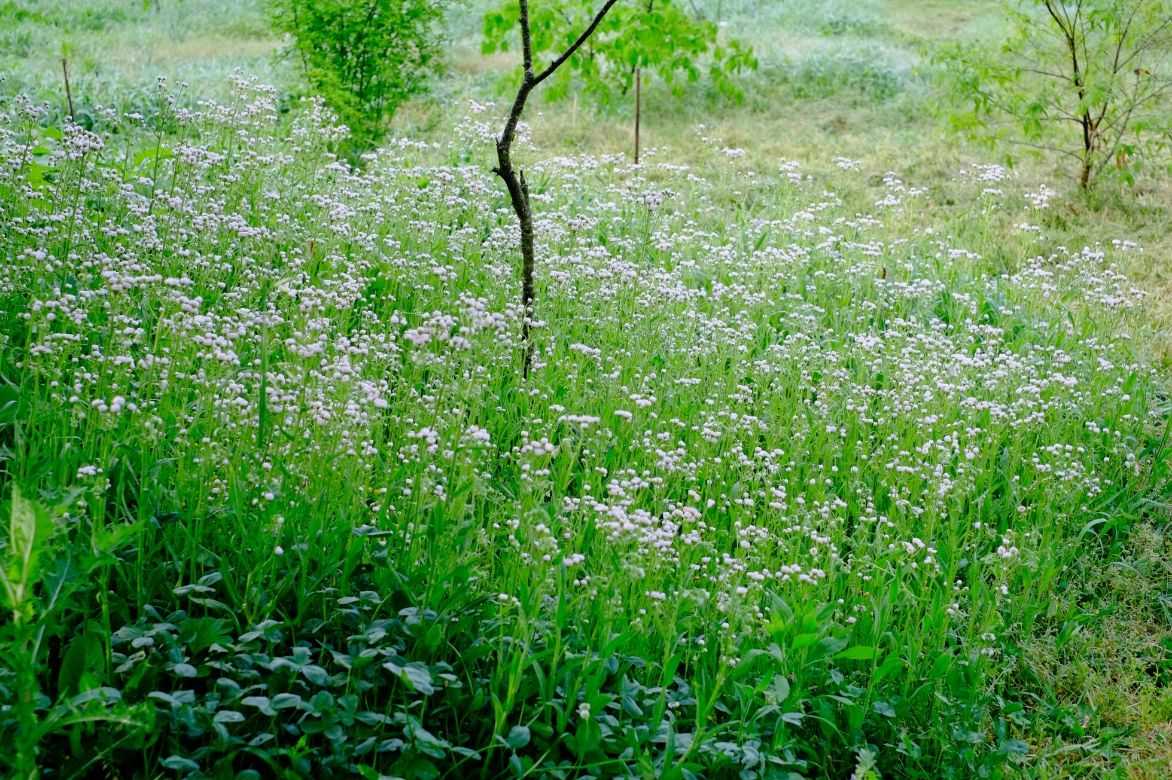
Read also
12 perennials for heavy, wet soilMaintenance, care
Once well established, cardamine is a perennial that requires no maintenance, provided it does not lack water in summer.
It is important to ensure it maintains sufficient moisture at the base. The soil should be kept cool enough, or this vigorous perennial may suffer during prolonged drought.
It disappears quite early in the season to protect itself from summer heat and drought.
Consider adding a good layer of well-decomposed compost at the base each spring by scratching it in.
Over time, it will be sufficient to control its spread: remove any excess stolons and faded flower spikes.
Multiplication of Cardamine
In spring or autumn, cardamine easily multiplies by detaching the rooted stolons.
- With a spade, separate a stolon connected to the mother plant
- Dig it up
- Replant immediately in moist soil; it will quickly produce some roots
Pairing ideas
Cardamine is an essential plant in natural gardens where its pastel inflorescences brighten up cool areas and damp corners. It is perfect for adding brightness at the edge of light woodlands, by a pond, or in very cool borders.
It pairs easily with brunneras and lungworts.
It is among the first to flower in spring and will create a fresh tableau with a large number of spring bulbs such as daffodils, hyacinths, early tulips.
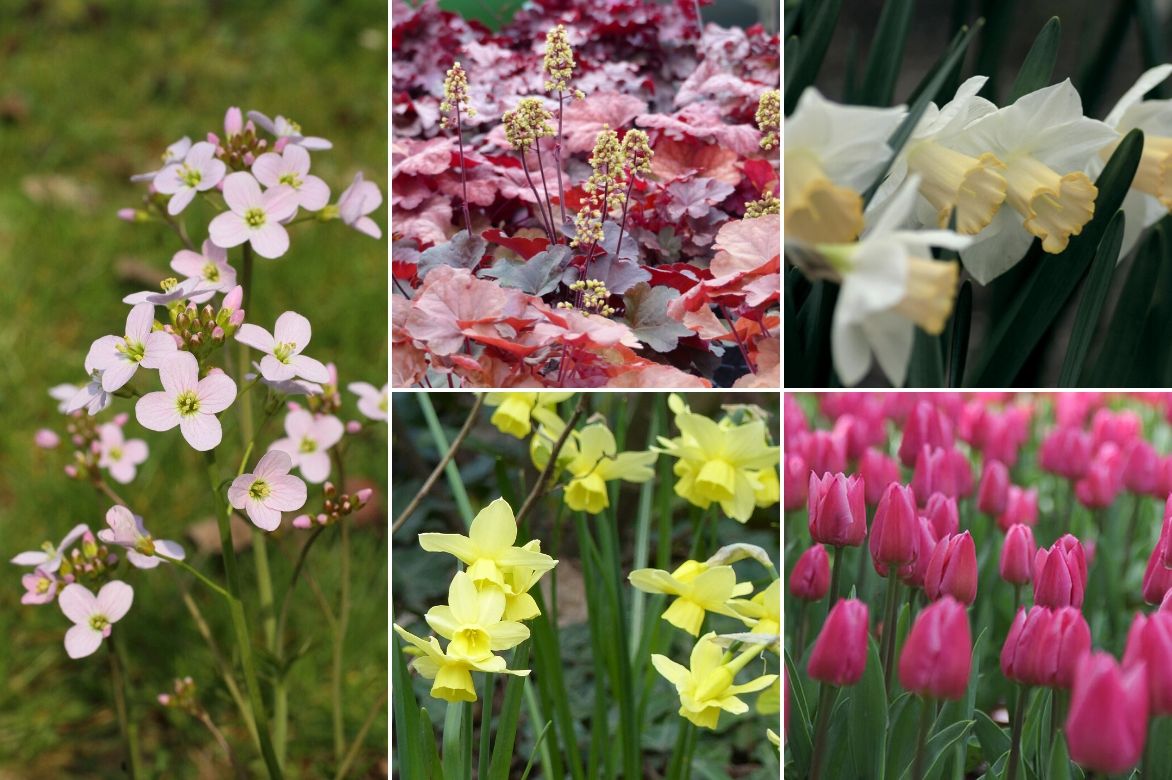
An example of a spring association: Cardamine pratensis, Heuchera ‘Little Cutie Blondie’, Daffodils ‘Salomé’ and ‘Stint’, Early Tulip ‘Christmas Dream’
You can create a lovely spring scene by planting alongside Lychnis, astilbes, and white or pink Physostegia virginiana.
Plant it at the edge of a woodland or in a cool rockery, alongside tiarellas, Omphalodes, dodecatheons, epimediums, and Mellitis.
It also pairs very well with Symphytum grandiflorum.
Useful resources
- Consider groundcover perennials and try our tried-and-true options
- Do you have a pond to plant? Get inspired by our articles
- Subscribe!
- Contents
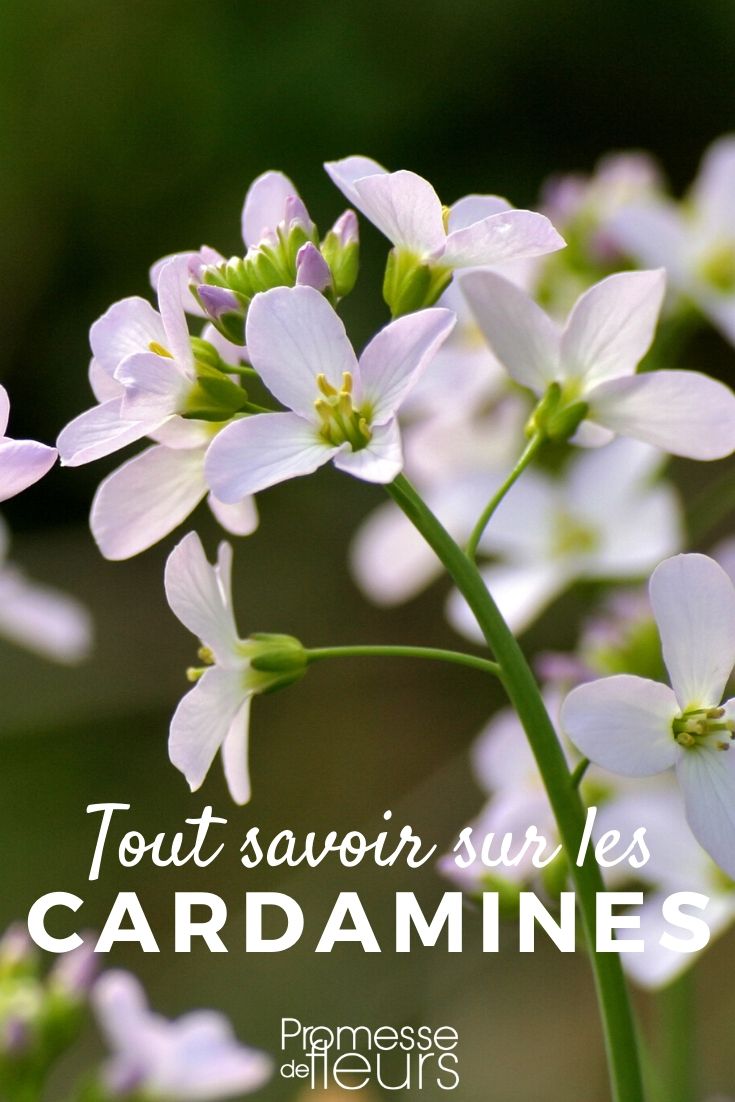































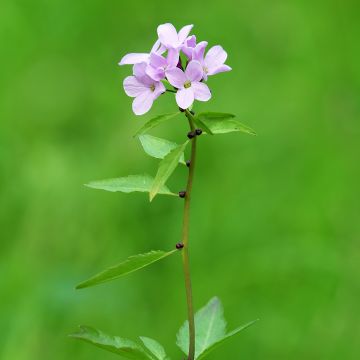


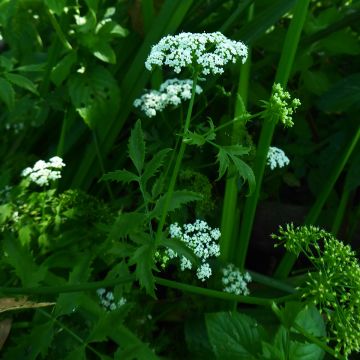

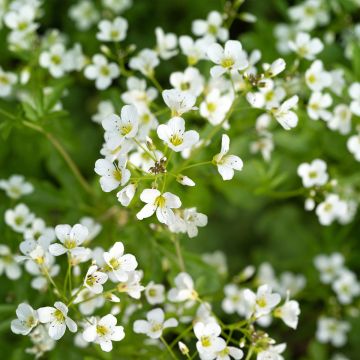
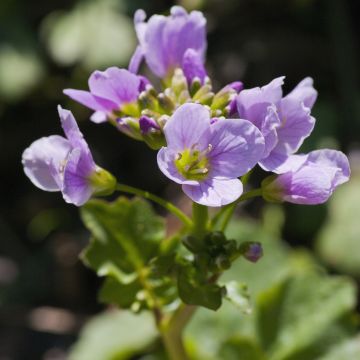

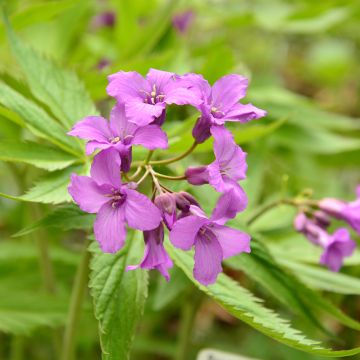
Comments